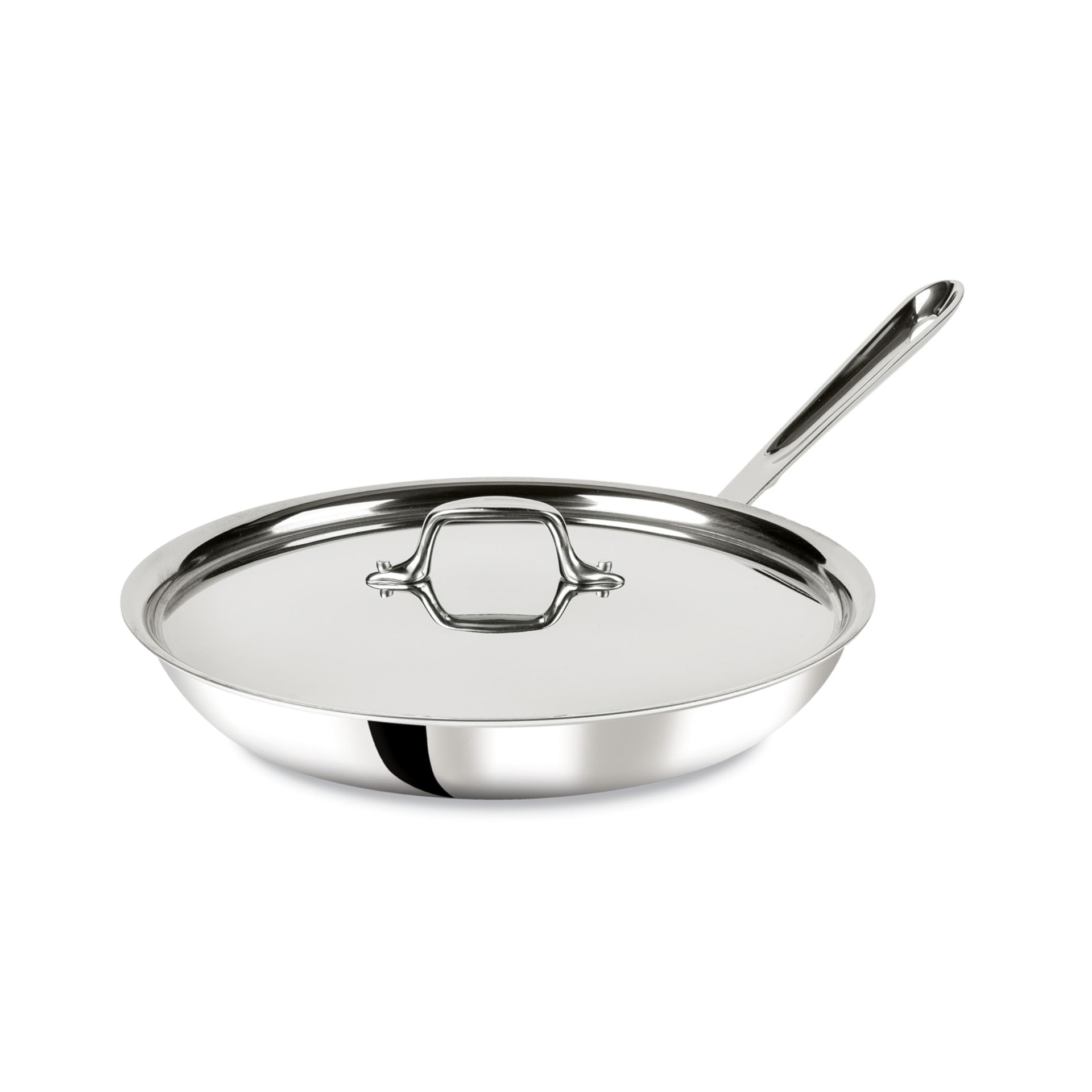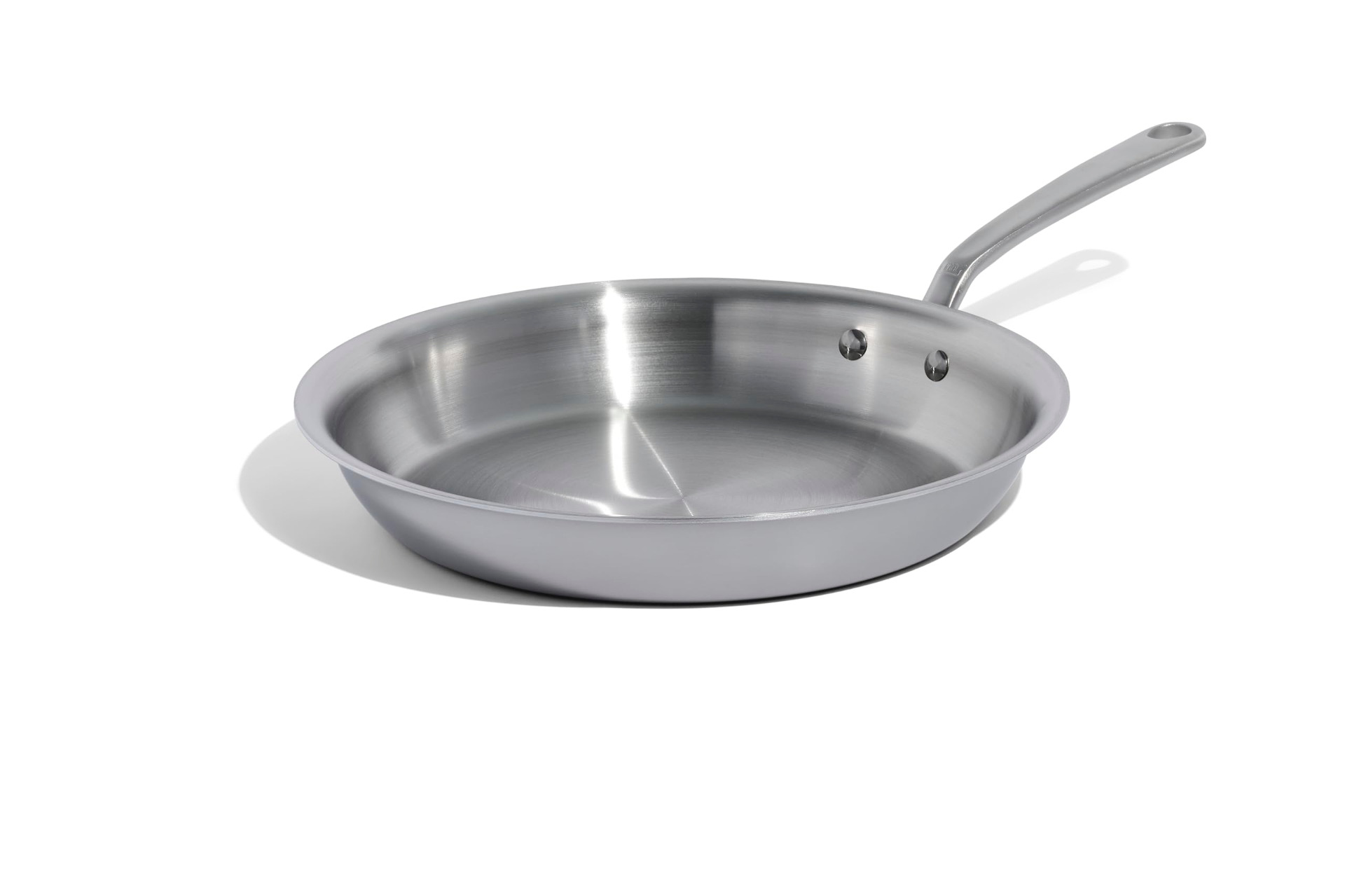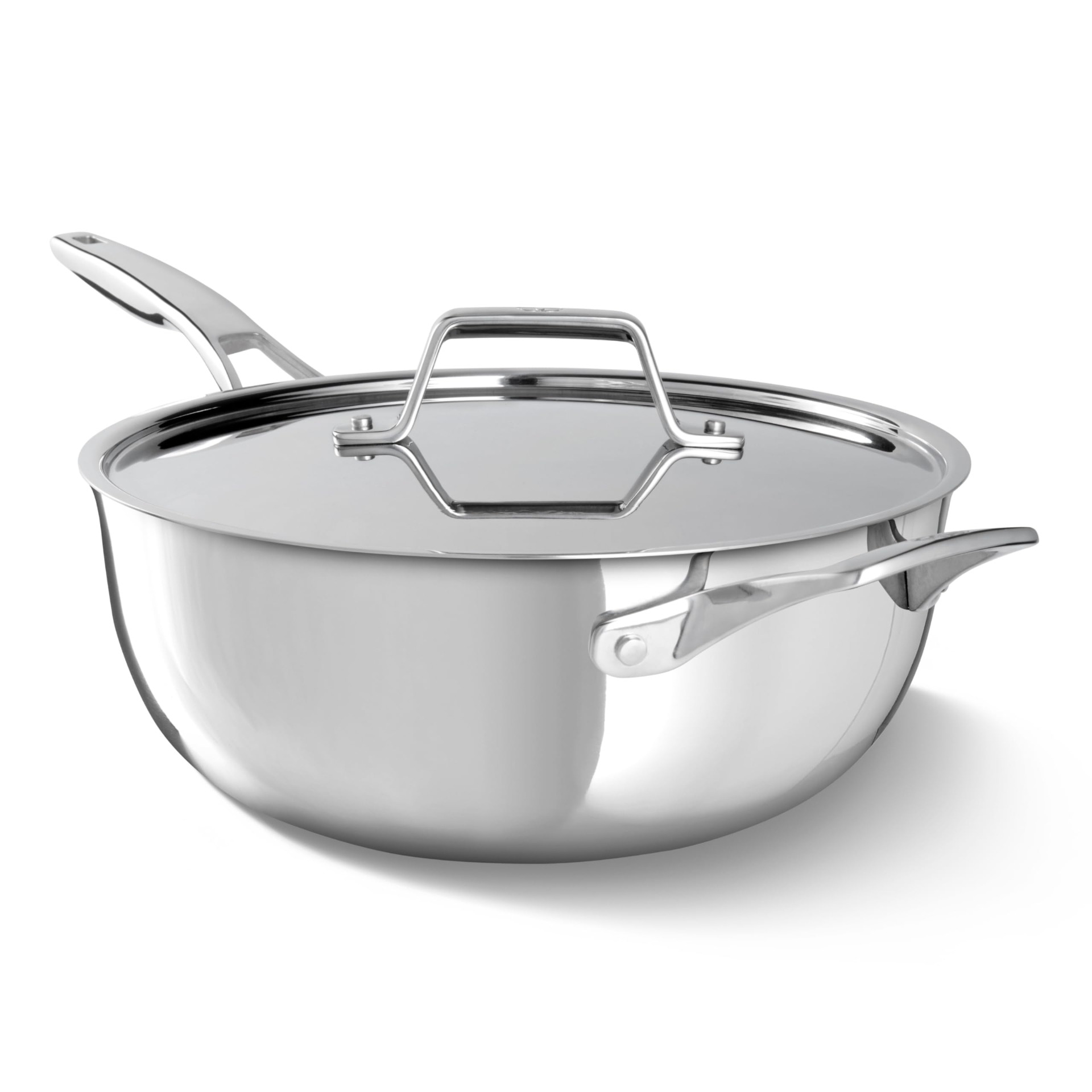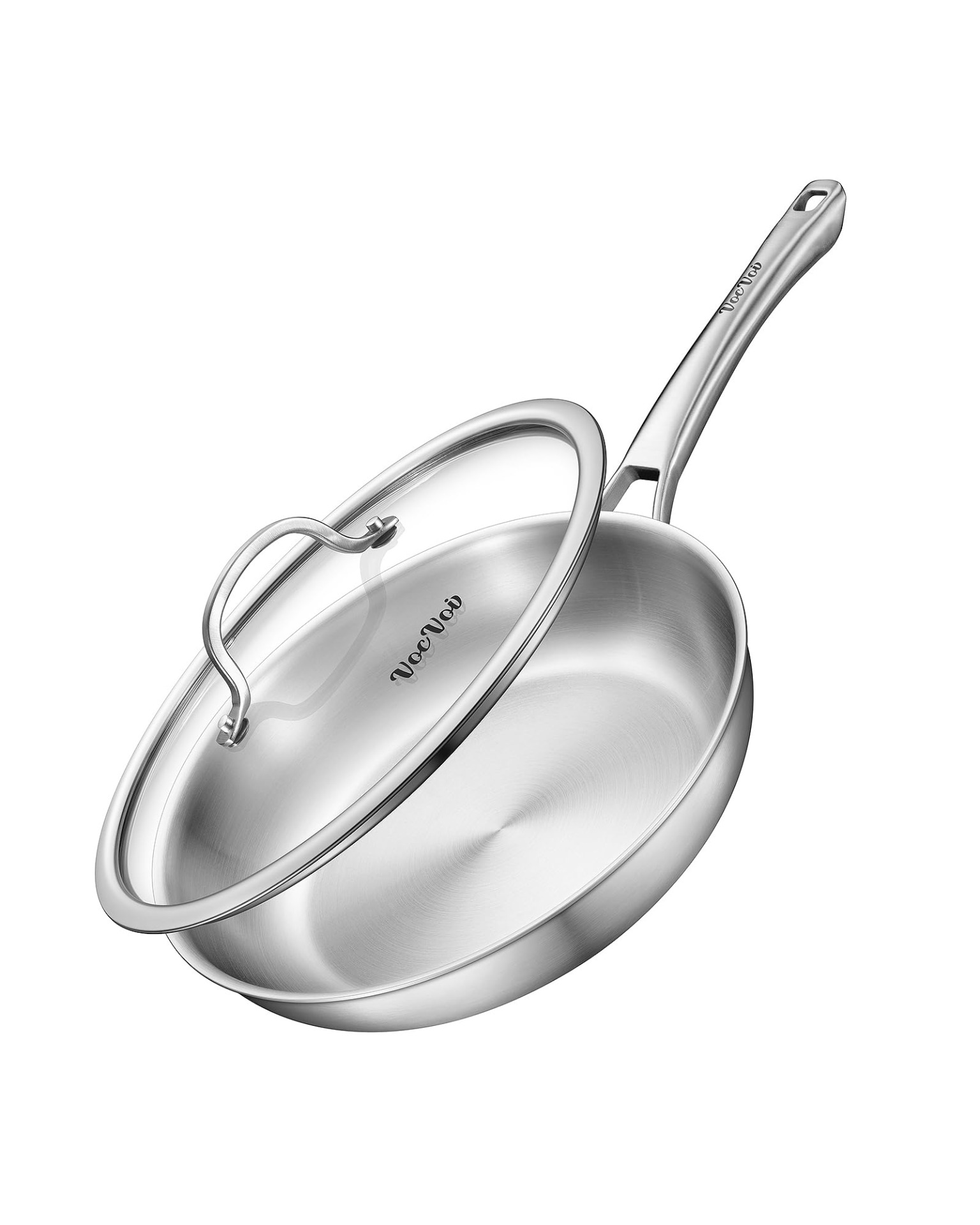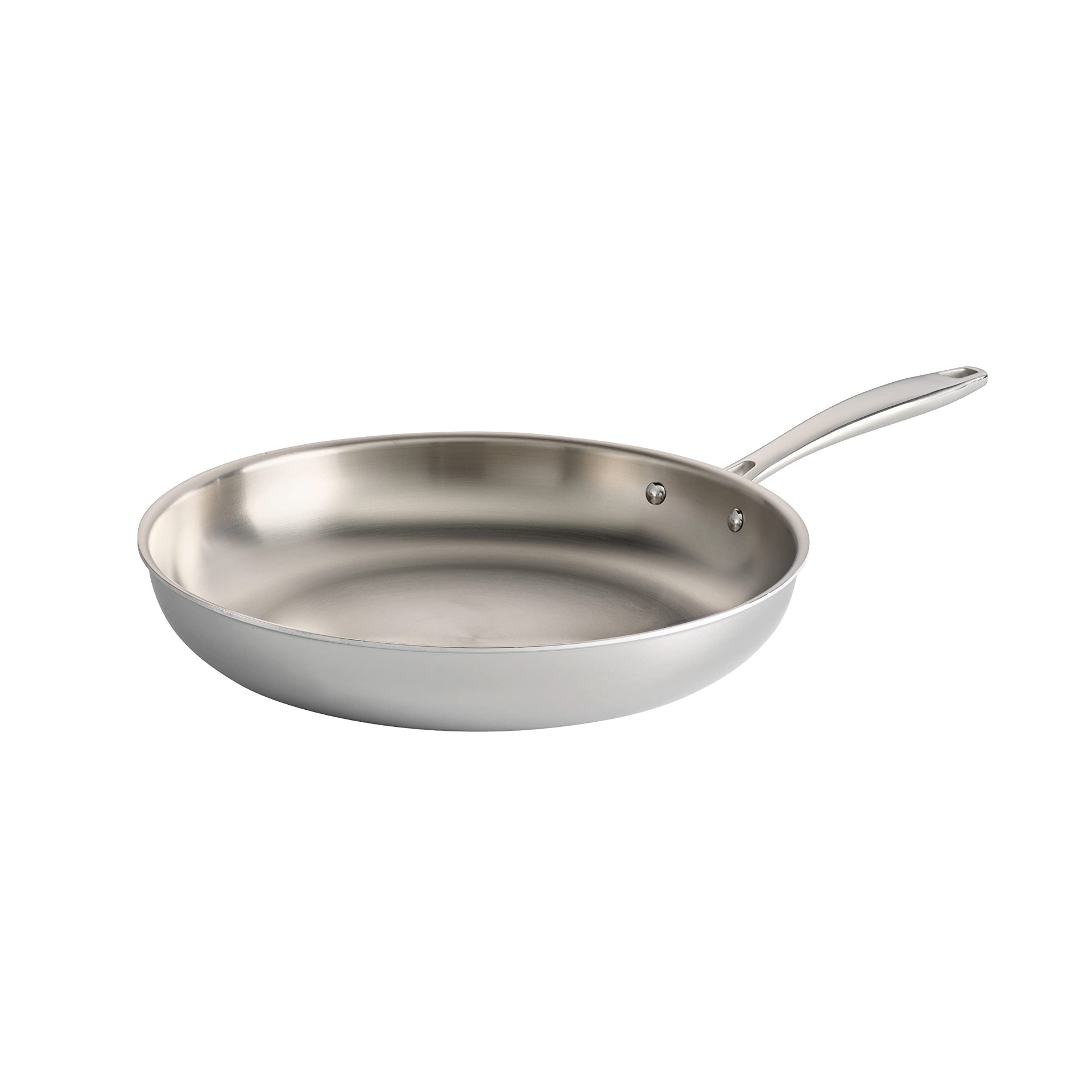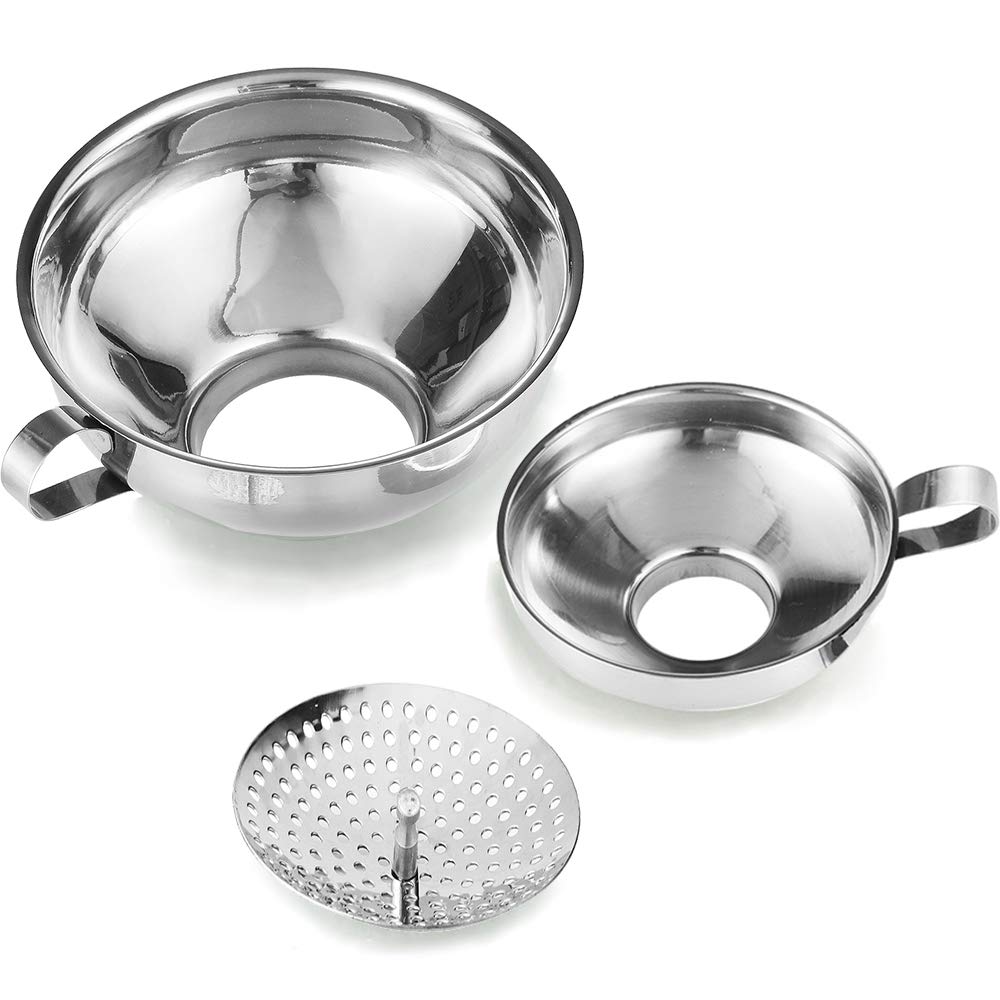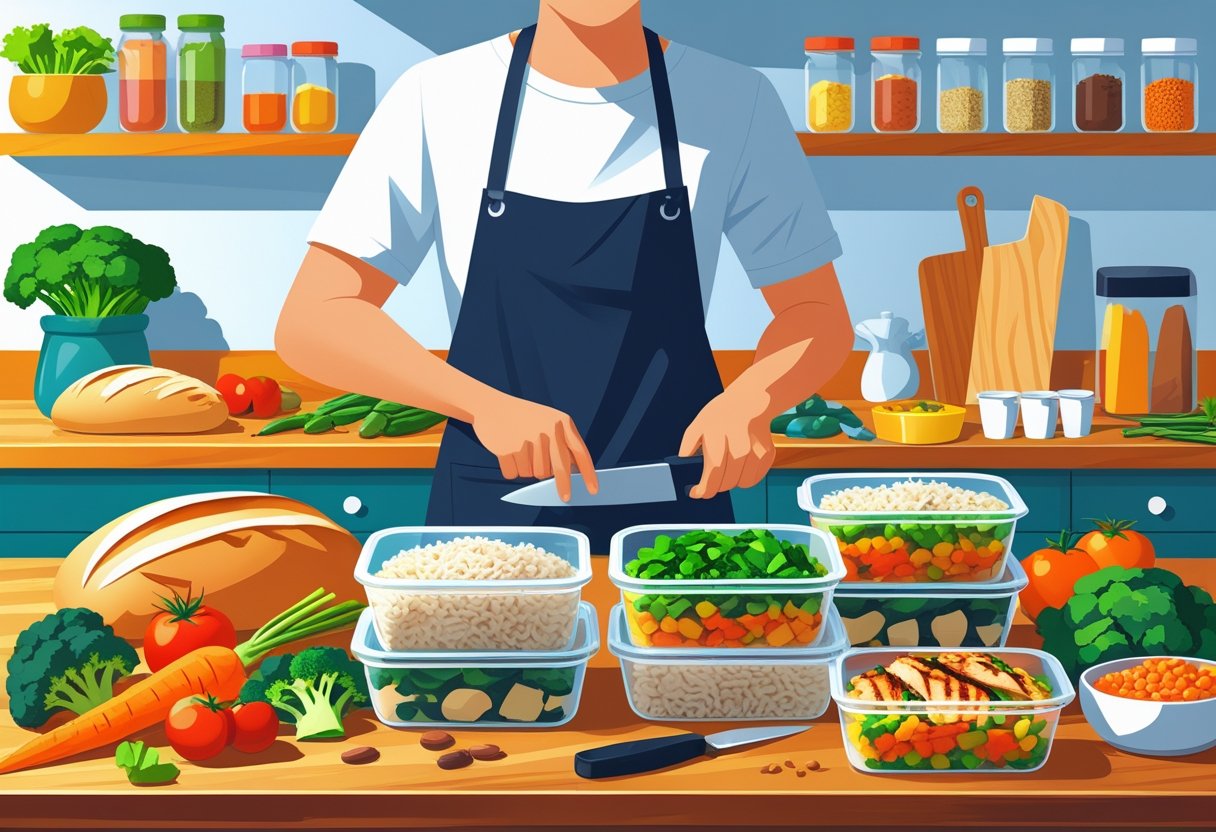Food waste eats away at most household budgets, yet a few tweaks in the kitchen can slash both waste and grocery bills. The average family tosses out hundreds of dollars in food each year—kind of painful when you think about it.
5 Stainless Steel Pans You Will Keep Using for Years: Professional Grade Cookware That Delivers Superior Performance and Durability
Stainless steel cookware forms the backbone of professional kitchens and serious home setups. Unlike nonstick pans that need replacing every few years, a good stainless steel pan can stick around for decades—if you treat it right.
These pans offer fantastic heat retention, can take high temps, and honestly, they just get better the more you use them.
The durability brings some real long-term savings compared to buying nonstick over and over. You can use them on any cooktop, induction included, and toss them in the oven without a second thought.
They're especially great for searing, deglazing, and building up those bits of fond that make pan sauces taste so good.
When you're picking out stainless steel pans, construction quality really matters. Tri-ply or multi-ply with an aluminum core gives you even heat, and things like handle design and pan weight make a surprising difference in daily use.
We dug into dozens of stainless steel pans, testing and researching to find the ones that actually deliver—and that you'll still want to use years down the line.
Best Stainless Steel Pans
Stainless steel pans can seriously outlast non-stick when you take care of them. We picked these five because their construction, heat distribution, and durability just stand out after years of regular use.
All-Clad D3 12-Inch Stainless Steel Frying Pan
This pan's build quality and even heating genuinely outlast generations of nonstick cookware.
Pros
- Outstanding heat distribution—no hot spots
- Built to last for decades, no coatings to worry about
- Handles all cooktops and oven temps up to 600°F
Cons
- You need to preheat it right or food will stick
- It's heavy, so maneuvering takes some muscle
- Costs more upfront than other stainless options
We've used the All-Clad D3 for so many meals, and it keeps impressing us with its consistency. The tri-ply construction heats evenly—something you'll notice right away when you're searing steak or making delicate fish.
Unlike nonstick pans that lose their coating, this one still looks solid after loads of use. We don't worry about using metal utensils, and finishing dishes in a hot oven is never a problem.
Honestly, there's a learning curve. We had to nail the water droplet test and get the oil temp just right before eggs and pancakes would release cleanly. Once you get it down, though, it's a breeze.
Cleanup takes a little more work than nonstick, but Bar Keepers Friend wipes away even stubborn fond. The investment feels worth it when you think about how many cheap pans you'd go through otherwise.
Made In 12-Inch Stainless Steel Frying Pan
This Italian-made pan brings professional-grade performance and will easily outlast several rounds of nonstick pans.
Pros
- Five layers—amazing heat distribution
- Handle stays cool, even during long cooking sessions
- Works on every cooktop, oven safe up to 800°F
Cons
- Needs proper preheating or food will stick
- Heavier than aluminum pans, so it can tire you out
- It's pricey—definitely not a budget pick
We've cooked everything in this pan, and it keeps delivering restaurant-level results. The five-ply build heats evenly from edge to center—no more hot spots.
After searing steaks and then making eggs the next day, we noticed how quickly it responds to temperature changes. Stainless steel just gets better with use, unlike nonstick that wears out.
The riveted handle was a pleasant surprise—during long sessions, we could still move the pan around without burning our hands.
Once you learn the right cleanup tricks, it's pretty straightforward. A quick soak and gentle scrub does the job, and you can even toss it in the dishwasher when you're in a hurry.
Calphalon Premier Chef's Pan
This pan brings professional performance and will outlive nonstick pans, keeping its cooking excellence for ages.
Pros
- Five layers—tough as nails and resists warping
- Heats up fast and keeps the temp steady
- Moves from stovetop to 500°F oven without missing a beat
Cons
- Needs preheating or food will stick at first
- Hand washing and some polishing keep it looking sharp
- Costs a good bit more than basic stainless pans
We've put this chef's pan through tough daily cooking for months. The aluminum core really speeds up meal prep, especially for one-pot dishes or braising bigger cuts.
The 4.5-quart size is perfect for everything from stir-fries to roasts. Our old nonstick pans wore out in a couple years, but this one still looks new.
What really stands out is the even heat—no more burnt garlic or undercooked veggies. The handle stays cool enough for most cooking, though we still grab a potholder when moving from oven to counter.
VocVoi Tri-Ply Stainless Steel Frying Pan
This pan brings reliable tri-ply performance and will last way longer than nonstick alternatives.
Pros
- Tri-ply design—great heat distribution
- Works on all cooktops, induction included
- Dishwasher safe for easy cleanup
Cons
- Heavier than single-layer pans—your arms will notice
- Food sticks if you skip the preheat step
- Center staining can show up over time, even with careful cleaning
We tested this pan for months and the tri-ply build really does help with even heating. It browns proteins beautifully, and there's no coating to worry about scratching.
The handle stays cool on the stovetop, though it gets warm on high heat. Whether on gas or induction, it worked smoothly across the board.
Cleanup is easy in the dishwasher, but a quick hand wash with Bar Keepers Friend keeps it looking new. Unlike our old nonstick pans that died every couple years, this one still shows zero wear.
The snug-fitting lid and 2-quart capacity make it versatile for everything from steaks to sauces. At 3.5 pounds, it's solid but not too heavy for most tasks.
Tramontina Tri-Ply Clad 12-Inch Frying Pan
This pan gives you real value and long-term durability—without the premium price tag.
Pros
- Even heating—no hot spots anywhere
- Outlasts nonstick sets if you take care of it
- Performs like the expensive brands but costs less
Cons
- Needs preheating or food will stick at first
- Shows water spots and fingerprints—regular polishing helps
- Heavier than nonstick, which can be a hassle for some
After months of daily use, this is our go-to for everything from eggs to stir-fries. The tri-ply construction heats so evenly, we almost never get those annoying hot spots.
The 12-inch size handles family meals without crowding. Unlike nonstick that falls apart in a few years, this one barely shows any wear.
We move it straight from stovetop to oven (up to 500°F) regularly. There's a bit of a learning curve with heating and oil, but the results are worth it once you get the hang of it.
Buying Guide
Construction Quality
We always go for tri-ply or multi-ply when picking stainless steel pans. Those layers of aluminum or copper sandwiched in stainless steel really make a difference for even heat.
Full clad construction means those layers go all the way up the sides, not just the base. That helps avoid hot spots and gives you more consistent results.
Handle Design
Stainless steel handles tend to stay cooler than most on the stove. We like riveted handles better than welded—they just last longer.
The handle should feel balanced when you pick up the pan. A comfy grip means less hand fatigue, especially if you're cooking for a while.
Thickness and Weight
Heavier pans usually mean thicker construction and better heat retention. We check for a base that's at least 4-5mm thick for the best results.
Thin pans heat unevenly and warp over time. The best stainless pans feel solid but not so heavy that you dread picking them up.
Longevity Factors

Non-stick pans usually need replacing every couple of years, but solid stainless steel cookware sticks around for decades if you treat it right.
We can grab a metal spatula without worrying about scraping up the surface, which is honestly a relief.
Size Selection
Think about how you actually cook before picking a pan size. An 8-inch pan is perfect for solo breakfasts, while 10- or 12-inch ones can handle bigger meals.
Depth matters, too. Shallow pans are great for searing, but if you want to keep splatters in check while sautéing, deeper sides really help.
Frequently Asked Questions
What are the top features to look for in long-lasting stainless steel cookware?
Definitely look for 18/10 stainless steel. That means 18% chromium and 10% nickel, which keeps pans from staining and helps them look good even after years.
Multi-ply construction is a must—aluminum or copper cores sandwiched between steel layers spread heat evenly and stop those annoying hot spots.
You want heavy-gauge steel. Thicker pans won't warp or dent as easily, so the bottoms stay flat and cook evenly for years.
Honestly, welded handles beat riveted ones for strength. Welded attachments don't loosen up as quickly, even if you heat and cool the pan a ton.
How do 5-ply stainless steel pans compare to other multi-layered cookware in terms of durability?
5-ply pans hold heat better and spread it more evenly than 3-ply. Those extra layers add thermal mass, so your cooking temperature stays steady.
Usually, these pans stack stainless steel and aluminum, giving you the toughness of steel but the heat conduction of aluminum. Kind of the best of both worlds.
They're heavier, no way around it. But that extra weight keeps them stable on the stove and less likely to slide around while you cook.
5-ply costs more up front, but you get what you pay for. They just last longer and keep working like new.
Which stainless steel cookware sets are known for their longevity and consistent performance?
All-Clad D3 and D5 sets have this reputation for lasting decades. Their bonded construction keeps the layers from separating, which is a big deal.
Demeyere Proline makes each pan a little differently, tailoring the construction to the job. It's a smart approach for durability and performance.
Cuisinart MultiClad Pro is a solid pick if you want quality without a huge price tag. They hold up well for home cooking.
Made In cookware stands out for restaurant-grade durability, but you can buy it directly online. Their 5-ply build is tough enough for pro kitchens.
What makes All-Clad D5 cookware a preferred choice for durable kitchenware?
D5 pans layer stainless steel and aluminum five times over. That means even heat and a structure that doesn't give up after years of use.
All-Clad bonds every layer from edge to edge, so you don't have to worry about the layers peeling apart like with some cheaper brands.
Both inside and out, they use 18/10 stainless steel. It shrugs off corrosion and stains, and still looks good after heavy cooking.
The brushed finish is clever—it hides scratches and scuffs better than a shiny polish. That's a nice touch for anyone who actually uses their pans.
Are there specific care instructions that ensure the longevity of stainless steel pans?
Let pans cool down gradually after cooking. If you dunk a hot pan in cold water, you might warp it, especially if it's not super thick.
Bar Keepers Friend works wonders for cleaning off mineral spots and keeping the steel shiny. It's pretty much made for this job.
Preheat your pan before adding oil or food. When water droplets dance on the surface, you're good to go, and food won't stick as much.
Hand washing helps the finish last longer, honestly. Dishwashers can leave spots or dull the steel, especially on hotter cycles.
What are the benefits of investing in high-grade stainless steel cookware for long-term use?
Quality stainless steel pans can last for decades—think 20 to 30 years—if you treat them right. Compare that to non-stick pans, which you might find yourself tossing every couple of years.
Sure, the upfront cost is higher, but over time, you end up spending less. That's a pretty solid trade-off, if you ask me.
Throughout all those years, stainless steel pans keep delivering steady, reliable cooking results. Unlike non-stick coatings that just don't hold up, stainless steel doesn't really change much.
And there's no coating to chip or flake off into your food. That's a relief for anyone who worries about what might be sneaking into their dinner.
You can crank up the heat without stressing. Stainless steel can go from stovetop to oven—even under the broiler—and it won't blink.
Home food preservation's gotten more popular as folks look for ways to cut waste and save cash at the grocery store. Canning lets you stretch the shelf life of seasonal produce, whip up homemade gifts, and stay in control of what goes into your preserved foods.
Feeding yourself well on just $20 a week sounds impossible, right? But honestly, with some planning and a bit of strategy, it's totally doable—even if you're skeptical at first.

